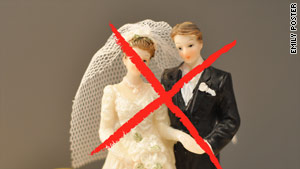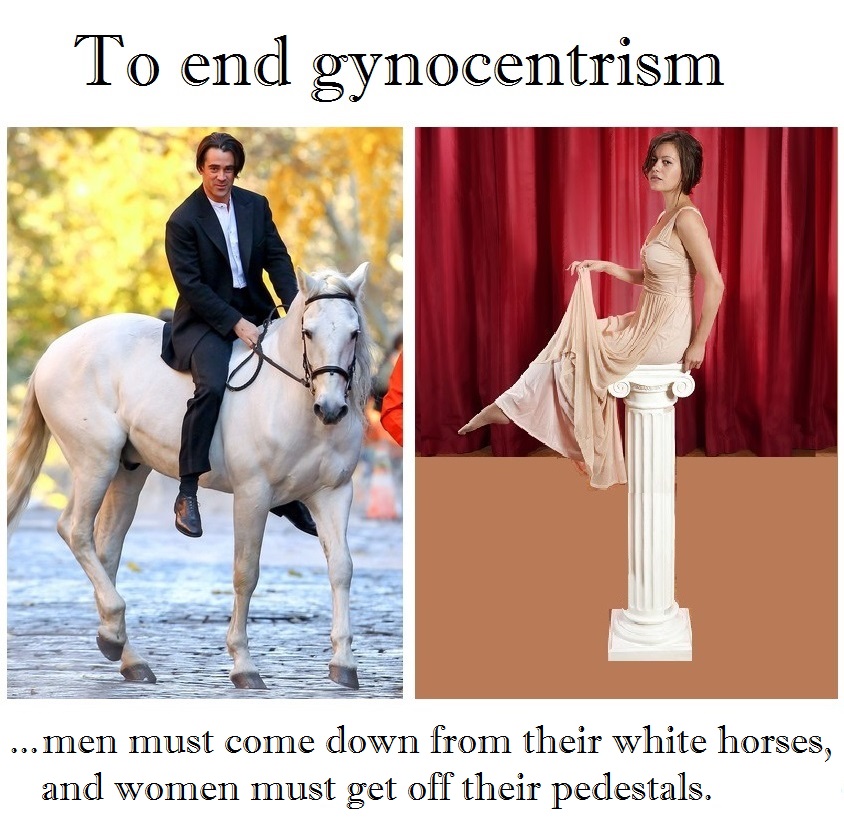Post gynocentrism
Post-gynocentrism culture: a counterculture or subculture?
By Peter Wright and Paul Elam
Post-gynocentric attitudes are entertained by an increasing number of people, and by groups like those focused on Men’s Human Rights Advocacy (MHRAs), Women Against Feminism (WAF), and Men Going Their Own Way (MGTOW). While they all demonstrate a reaction against gynocentric culture, it’s an error to conceptualize them as engaging in countercultural activity alone.
It should be noted that countercultural involvement is not always conscious and may be an unintended byproduct of committments that clash with the dominant culture. There are few examples of this better than Men Going Their Own Way. They demonstrate a new model for culture, and comprise a peaceful subcultural demographic that is at once countercultural, simply by going about their lives within the larger society.
Before we get to what ‘going about their lives’ means, let’s first make a few distinctions.
To clarify the distinction between subculture and counterculture, the following passages from Howard P. Chudacoff’s book ‘The Age of the Bachelor’ are instructive. Chudacoff asks if the values, behaviors and institutions typical of bachelors comprise a subculture — in other words, a subset of the general culture — or whether they are part of a counterculture that openly conflicts with the general culture. He begins by defining the difference between subculture and counterculture:
“A subculture exists as a reasonably benign component of a more general culture. The defining characteristics of a subculture may include such qualities as age, ethnicity, region or occupation. The elderly, the Irish, southerner’s, and carpenters are all subcultures. As well, a subculture may consist of people tied to each other by mutual special interests, such as bird watching, gun ownership or vegetarianism. According to one authority, the most important element in distinguishing a subculture is the degree to which values, artifacts and identities are shared among members. Such sharing is normally enhanced by the extent of conscious social separation between members of the smaller behavioral group and members of the larger society. Thus hair color can characterize a group but in itself is not a strong enough criterion for special separation — though certain cohorts of redheads or blonds might disagree. Youth or an interest in bird watching, by contrast, more likely would be sufficient qualities to create a subculture.
In an article published in 1960, J. Milton Yinger, a sociologist and leading authority on subcultures, separated the distinguishing characteristics of subcultures into four types: (1) aspects of life, such as religion, language, diet, or moral values; (2) duration over a period of time; (3) a common origin; and (4) a mode of relationship –indifferent, positive, or conflictual– with the surrounding larger culture. Yinger also distinguished between two types of subcultures: (1) those groups characterized by ascriptive qualities that differentiate the group from the larger society, qualities such as language and religion; and (2) those groups with norms that arise specifically from tension or conflict between that group and the larger society, separate norms common to groups such as youth gangs or homosexuals. He dubbed the second type “contra cultures” which he notes could develop a series of inverse or counter values that stand in opposition to those of the larger society. The term “contra culture” evolved into “counterculture” in the 1960s.
“According to Yinger, practically every person is born into a culture and is automatically a member of several subcultures, but an individual must actively and voluntarily join a counterculture. Moreover, conflict constitutes an essential element in the concept of counterculture, and such conflict differentiates a counterculture from a subculture. As sociologist William Zellner has written, “A subculture is part of the dominant culture, but some aspects of the subculture’s value system and life-style sets its members apart from the marger culture…” That is, a subculture normally does not pose a threat to the dominant culture. A counterculture, on the other hand, “is deliberately opposed to certain aspects of the larger culture.” Yinger has added that to understand a subculture, it is not necessary to understand its interaction with the larger society. But a counterculture’s identities a product of such interaction and can be understood only through that relationship. [Chudacoff, pp.12-14]
The title of this article asks whether post-gynocentric culture is better defined as a counterculture, or subculture? After reading the definitions above, the answer is unmistakably Both. Post-gynocentric culture defines itself in resistance to gynocentric culture and operates as a peaceful subculture based on human rights, equality, and greater freedom of choice than the larger culture currently prescribes – meta-ideological commitments that may, based on their increasing popularity, become principles of the culture at large.
The confluence should hardly be surprising. The Man Going His Own Way usually works, pays taxes, goes to school, socializes with friends, generally obeys laws and is indistinguishable on the surface from his cultural and subcultural counterparts.
However, his personal rejection of marriage, sex based chivalry or treating what relationships he has with women as a financial obligation – as well as his steadfast refusal of sex-based expectations on his values and actions — are all practiced in rejection and defiance of the culture at large. He is, through his personal choice, participating in counterculture, and as such is furthering advocacy by example of lifestyle and consciousness that is “deliberately opposed to certain aspects of the larger culture,” per Yinger.
The charge that post-gynocentric culture (including MGTOW, WAF and the MHRM) is merely a reaction to feminism can be dismissed. Post-gynocentric culture can’t be reduced to antifeminism any more than the black civil rights movement can be reduced to being anti-white, or the gay rights movement being reduced to anti-heterosexuality.
These are grossly oversimplified rationalizations — more symptomatic of cultural prejudice and backlash than credible explanations for the post-gynocentric culture’s existence. It may, however, be said that the drumbeat of reductionism characterized by these misperceptions adds momentum to the countercultural reaction.
Sources:
Howard P. Chudacoff, The Age of The Bachelor: Creating an American Subculture.
Peter Wright, Gynocentrism and its Cultural Origins
Peter Wright, A Voice for Choice
Paul Elam, What feminism is really about and why anyone who values freedom should fight against it
Paul Elam, Counterculture
Dean Esmay, Breaking the pendulum: Tradcons vs. Feminists
Dean Esmay and Paul Elam, On the MHRM, MGTOW, and Creating a Counter-Culture
August Løvenskiolds, Freedom from gynocentrism in 12 Steps
Non-gynocentric relationships
Post-gynocentrism relationships between men and women are possible and desirable for many people. The following articles explore how relationships can be revisioned as intimate friendships. – PW
The other Beauty Myth
Sex and Attachment
Love and Friendship
On the marriage question
Pleasure-seeking vs. relationships
The Marriage Boycott
The following articles describe the increasing post-gynocentrism phenomenon of marriage shunning by males, and the rationale behind it. – PW

Marriage is a gynocentric custom
Slavery 101 – dating as taught to girls
Valentine’s Day: gynocentrism’s most holy event
Women complaining about lack of available slavemasters
Men not marrying
Men shouldn’t marry
Marriage is obsolete. Are women?
Men on strike: why men are boycotting marriage
Don’t give up on marriage? Request denied
Down the aisle again on the marriage question
MGTOW & bachelorhood
MGTOW philosophy
Perspectives on MGTOW (Men Going Their Own Way) – a significant post-gynocentrism subculture based on the principle of male self-determination.
MGTOW: on the origin of gynocentrism
How to tame men – gynocentrism style
Gynocentrism – why so hard to kill?
MGTOW – facts and fallacies
What are MGTOW against?
Early references to “Men going their own way”
Definition of MGTOW
Self-determination: phrase origins
A MGTOW Yardstick: Determination Of Self By Other (DOSBO)
On the nature of MGTOW self-determination
MGTOW: 12th century style
MGTOW movement of 1898
Authoring your own life
Don’t just do something, SIT THERE
The historical role of gynocentrism in societal collapse
Marriage shunning
The following collection of articles describe the post-gynocentrism phenomenon of marriage shunning by males, and the rationale behind it.

Marriage is a gynocentric custom
Slavery 101 – dating as taught to girls
Valentine’s Day: gynocentrism’s most holy event
Women complaining about lack of available slavemasters
Men not marrying
Men shouldn’t marry
Marriage is obsolete. Are women?
Men on strike: why men are boycotting marriage
Don’t give up on marriage? Request denied
Down the aisle again on the marriage question
Post-gynocentrism relationships
Post-gynocentrism relationships between men and women are possible and even desirable for many people. The following articles explore how relationships can be revisioned.
Hail to the V
The other Beauty Myth
Sex and Attachment
Love and Friendship
Pleasure-seeking vs. relationships
On the marriage question
Post-gynocentrism culture
Articles (mostly from AVfM) exploring post-gynocentrism culture. Each article presents a post-gynocentrism paradigm for individual or collective existence.
How to end gynocentrism
Gynocentrism – why so hard to kill?
Freedom from gynocentrism in 12 Steps
Breaking the pendulum: Tradcons vs. Feminists
Why anyone who values freedom should be fighting against feminism
A Voice for Choice
Gynocentrism and the hierarchy of entitlement
The Counterculture
MHRM: counterculture or subculture?
On creating a counter-culture
A little blood in the mix never hurt a revolution


